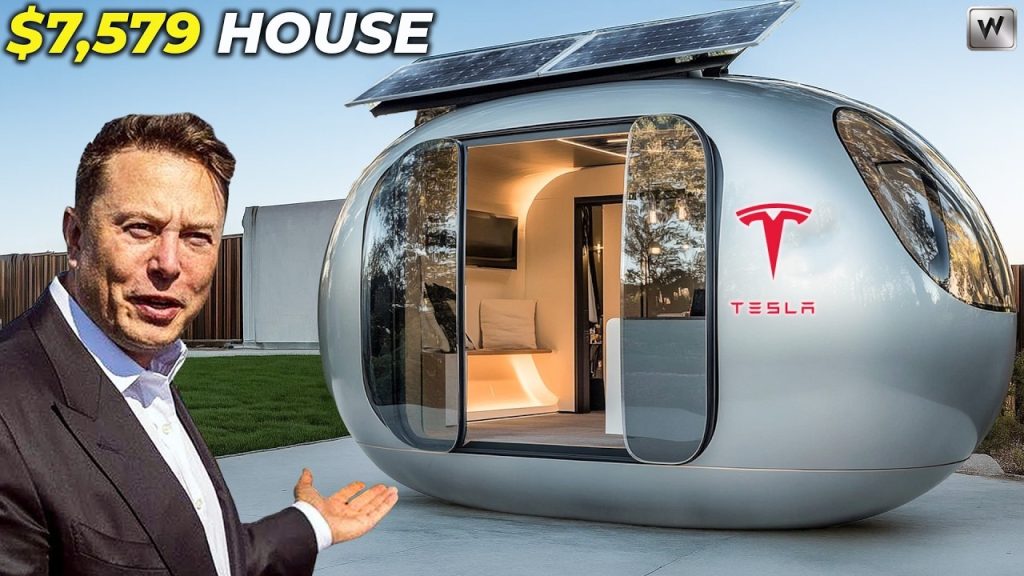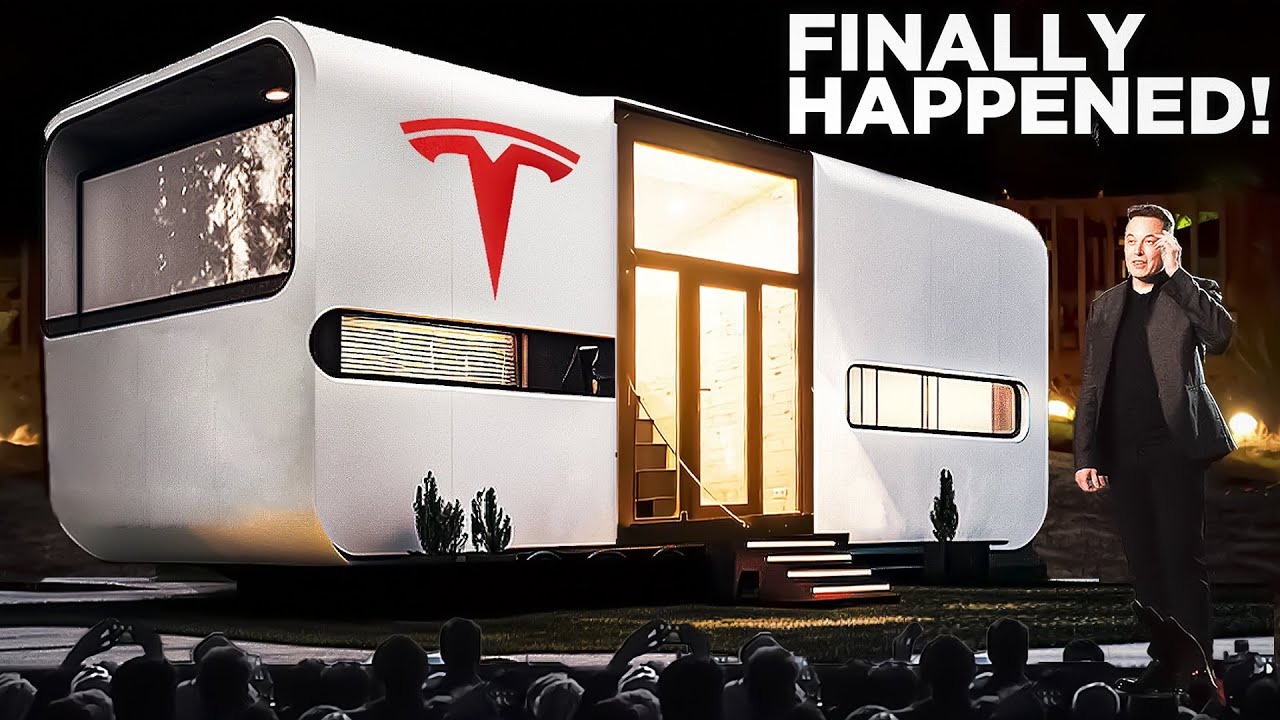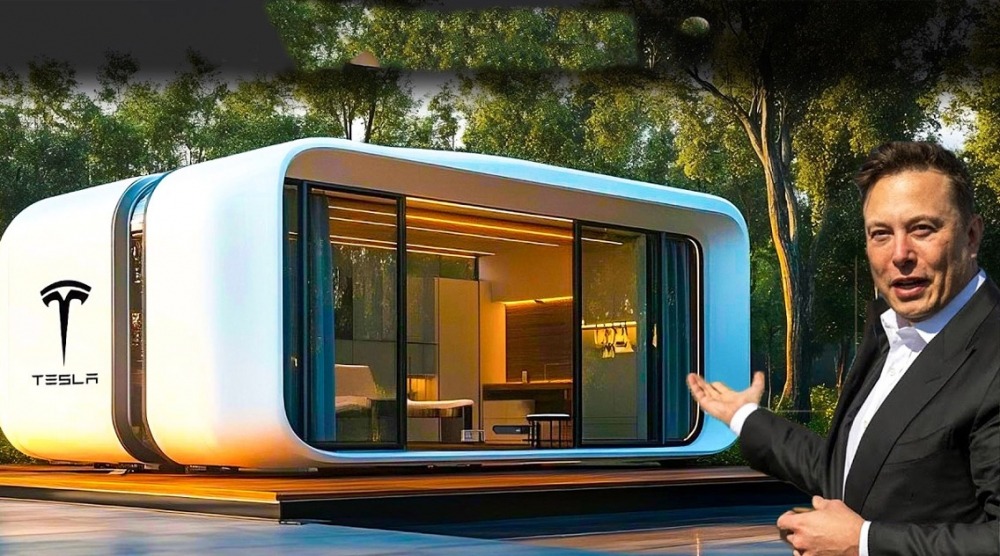Tesla’s $7,579 Tiny House REVEALED – What’s Inside Will Shock You!
# SHOCKING $7,579 Tesla Tiny House Revealed – What’s Really Inside Elon Musk’s Game-Changer?

Is Tesla overhyping a dream, or is Elon Musk on the brink of sparking the biggest housing revolution of the 21st century? A solar-powered, AI-enabled, disaster-resistant home for just $7,579 sounds impossible, yet Musk claims it’s real.
Let’s uncover the truth behind Tesla’s tiny house, priced less than a used car, and explore if it could save millions of lives.
Affordable Innovation: Tesla achieves this jaw-dropping price by revolutionizing housing with gigafactory-style modular building. Using AI-powered robotics and vertical integration, 90% of the home’s parts are made in-house, slashing labor costs from 30-40% to under 8%. Flat-pack delivery and assembly in under 24 hours by a three-person team eliminate the need for cranes or subcontractors.

A single truck can transport multiple units, cutting shipping costs by 70%. Tesla’s direct-to-consumer model bypasses the typical 25-35% markup, while lightweight steel frames, recycled plastics, and carbon composite siding ensure durability and eco-friendliness.
Disaster-Resilient Design: Built for America’s harshest disasters, the Tesla tiny house withstands hurricanes, floods, and wildfires. Its aerodynamic roof and internal bracing handle winds up to 175 mph, surpassing Category 5 storms.
An elevated base and waterproof materials protect against 3-foot floods, with critical systems above water level. Fire-retardant coatings and panels offer 90 minutes of direct flame resistance, far outlasting wood-frame homes. An optional Faraday cage shields electronics from lightning and EMPs, ensuring functionality during crises.
Smart, Off-Grid Interior: Inside its 375-square-foot space, the home maximizes utility with smart design. A Murphy bed doubles as a sofa, hidden storage reduces clutter, and sustainable bamboo furniture adds comfort. Tesla Home OS, a voice-activated platform, controls lighting, climate, and security, integrating with Starlink for remote connectivity.

A HEPA filtration system refreshes air 60 times hourly, while off-grid features like gray water recycling and a composting toilet cut resource use by 80%. Solar glass tiles generate 4.8 kWh daily, stored in a 15 kWh Powerwall, eliminating utility bills—projected at just $257 annually versus $2,800-$4,200 for typical homes.
Landless Solutions: For those without land, Tesla is developing partnership zones in Texas, Nevada, and California, offering leased plots for as low as $49 monthly with shared solar microgrids and amenities.
Collaborations with FEMA position the home as emergency shelter, ideal for rapid deployment in disaster zones. Pilot programs, like Austin’s micro-housing initiative, lease city land at $89 monthly, potentially saving millions in public housing costs. Future “plug-and-live” zones will allow instant, permit-free setups with pre-approved infrastructure.
Is Tesla selling a fantasy or crafting the future of housing? This tiny house challenges flaws in housing, energy, and disaster response systems. For under $8,000, a safe, sustainable, debt-free life shifts from science fiction to potential reality. The question remains: is the world ready for Musk’s boldest vision yet?